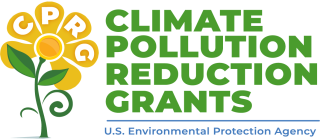Alaska Native Tribal Health Consortium

On this Page:
Overview
| Anticipated Award Amount | $24,232,383 | |
|---|---|---|
| Applicant | Alaska Native Tribal Health Consortium | |
| Application Title | Wind Power for Emissions Reductions and Community Resilience in Western Alaska Communities | |
| Sectors | Buildings Electric Power |
|
| Estimated GHG Reductions 1 |
Cumulative 2025‑2030: Cumulative 2025‑2050: |
|
Selected Application Summary
The selected application will support the Tribal Alaskan Native communities of Chevak, Toksook Bay, Tununak, and Nightmute in their efforts to reduce greenhouse gas (GHG) emissions by increasing their use of wind power as a clean energy source. These rural communities currently rely upon diesel generators for electricity and heating oil for building heat, contributing to elevated levels of harmful emissions and some of the highest utility costs in the United States. Project activities will include the replacement of existing wind turbines that have reached the end of their lifespan with larger, more durable wind turbines, and the installation of a battery energy storage system and a wind-to-heat system. The new, large-scale wind production infrastructure will reduce diesel fuel dependency and heating oil emissions, thereby enhancing the health, economy, and wellbeing of the overburdened rural communities.
Key Things to Know
Based on information provided by the applicant, the selected project will deliver the following benefits to reduce GHGs and support communities 1:
- Enhance public health and wellbeing in the Alaskan Native communities by reducing emissions of harmful pollutants, improving air quality, and fostering healthier ecosystems.
- Develop high-quality jobs and provide training for community members, enabling employment and engagement in the emerging wind energy industry.
- Decrease energy costs by an estimated 10% while enhancing grid resiliency with battery energy storage systems that provides backup power and minimizes outages.
- Reduce annual emissions by 1,410 tons of CO2 for each 1-megawatt wind turbine with battery storage unit installed in Toksook Bay and by 1,288 tons for each unit installed in Chevak.
Activities and benefits summarized above reflect the measures in Lower Yukon-Kuskokwim’s Priority Climate Action Plan (pdf) (0.9 MB).
1 The emission reduction estimates, as well as the descriptions of measures and benefits, were summarized from information provided by the applicant. These estimates, along with the award amount, are subject to change.
EPA will award grants to selected applicants once they meet all legal and administrative requirements. As of August 2024, grants are expected to be awarded by the end of 2024.
About EPA's Climate Pollution Reduction Grants (CPRG) Implementation Grants
Authorized under the Inflation Reduction Act, EPA’s CPRG program will provide nearly $5 billion in grants for states, local governments, Tribes, and territories to develop and implement ambitious plans to reduce greenhouse gas emissions and other harmful air pollution while benefitting low-income and disadvantaged communities.
For more information, visit Climate Pollution Reduction Grants.
